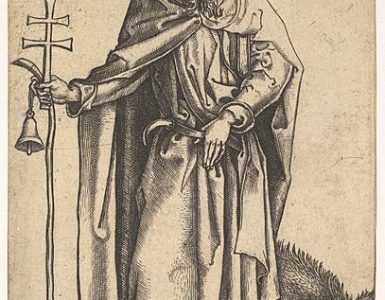Paul VI Audience Hall
Wednesday, 7 August 2019
Dear Brothers and Sisters, Good morning!
In the Acts of the Apostles, preaching the Gospel does not rely simply on words, but also on the concrete actions that bear witness to the truth of the Good News. It is a case of “wonders and signs” (Acts 2:43) performed by the Apostles, confirming their word and demonstrating that they act in the name of Christ. Thus the Apostles interceded and Christ “worked with them and confirmed the message by the signs that attended it” (Mk 16:20). Many signs, many miracles that the Apostles performed were indeed a manifestation of the divinity of Jesus.
Today we find ourselves before the first account of healing, before a miracle which is the first account of healing in the Book of the Acts of the Apostles. It has a clear missionary aim which seeks to kindle faith. Peter and John go to pray at the Temple, the centre of Israel’s experience of faith, to which the early Christians were firmly attached. The first Christians used to pray in the Temple in Jerusalem. Luke records the time: it is the ninth hour, that is 3:00 pm, when the sacrifice is offered as a sign of the people’s communion with their God; and also the time at which Jesus died, offering himself “once for all” (Heb 9:12; 10:10). And at the Temple door which is referred to as “Beautiful” — the Beautiful door — they see a beggar, a man paralyzed from birth. Why was that man at the door? Because the law of Moses (cf. Lv 21:18) forbade the offering of sacrifices by people with physical disabilities, which were believed to be the consequence of some sin. Let us remember that, faced with a man who was blind from birth, the people had asked Jesus: “who sinned, this man or his parents, that he was born blind?” (Jn 9:2). According to that mindset, there was always a sin at the root of a deformity. And later, they were even denied access to the Temple. The lame man, the paradigm of society’s many excluded and rejected, is there begging for alms, as he does every day. He cannot enter but he is at the door; when something unexpected happens: Peter and John arrive and an exchange of glances is sparked. The lame man looks at the two to beg for alms. The Apostles instead fix their gaze on him, inviting him to look at them in a different way, to receive a different gift. The lame man looks at them and Peter says to him: “I have no silver and gold, but I give you what I have; in the name of Jesus Christ of Nazareth, rise up and walk” (cf. Acts 3:6). The Apostles have established a relationship because this is the way that God loves to manifest himself, in relationships, always in dialogue, always in the apparitions, always with the heart’s inspiration: they are God’s relationships with us; through a true interpersonal encounter which can happen through love.
In addition to being the religious centre, the Temple was also a place for economic and financial exchange. The prophets and Jesus himself had often lashed out against this abasement (cf. Lk 19:45-46). How often I think of this when I see parishes that think money is more important than the Sacraments! Please! A poor Church: Let us ask the Lord for this. In meeting the Apostles, that beggar does not find money but he finds the Name that saves man: Jesus Christ, the Nazarene. Peter invokes Jesus’ name, he commands the paralyzed man to stand upright like the living; standing, and he touches this ill person, that is, he takes him by the hand and raises him up, a gesture in which Saint John Chrysostom sees “an image of Resurrection” (Homilies on the Acts of the Apostles, 8). And here appears a portrait of the Church that sees those in difficulty, that does not close her eyes, that knows how to look humanity in the face in order to create meaningful relationships, bridges of friendship and solidarity in place of barriers. The face of “a Church without frontiers” appears, “a Church which considers herself mother to all” (Evangelii Gaudium, 210), that knows how to take one by the hand in order to raise — not to condemn. Jesus always extends his hand, always tries to raise, so as to ensure that people may heal, be happy and encounter God. It is the “art of accompaniment” which is characterized by the delicacy with which one approaches “the sacred ground of the other”, giving the journey a pace that is “steady and reassuring, reflecting our closeness and our compassionate gaze which also heals, liberates and encourages growth in the Christian life” (ibid., 169). And this is what these two Apostles do with the lame man: they look at him, they say “look at us”, they extend a hand, they induce him to stand up and they heal him. This is what Jesus does with all of us. Let us think about this when we experience bad moments, moments of sin, moments of sadness. There is Jesus who says, “Look at me: I am here!”. Let us take Jesus’ hand and allow ourselves to be raised up.
Peter and John teach us not to put our trust in the means, though they are useful, but rather in the true richness which is our relationship with the Risen One. Indeed we are — as Saint Paul would say — “poor, yet making many rich; as having nothing, and yet possessing everything” (2 Cor 6:10). Our all is the Gospel which manifests the power of the name of Jesus who performs miracles.
And we — each of us —, what do we possess? What is our wealth, what is our treasure? With what can we make others rich? Let us ask the Father for the gift of a memory that is grateful in recollecting the benefits of his love in our life, to give everyone the witness of praise and gratitude. Let us not forget: a hand always outstretched to help the other to stand up; it is the hand of Jesus who, through our hand, helps others to stand.
Special Greetings
I greet the English-speaking pilgrims and visitors taking part in today’s Audience, especially those from Malta, China, Japan and the United States of America. Upon you and your families, I invoke the joy and peace of the Lord. May God bless you!
I offer a special greeting to young people, the elderly, the sick and newlyweds. The day after tomorrow we will celebrate the Feast of Saint Teresa Benedict of the Cross (Edith Stein), Virgin and martyr, co-patroness of Europe. I invite you all to look to her courageous choices, expressed in an authentic conversion to Christ and in offering her life against any form of intolerance and ideological perversion.










